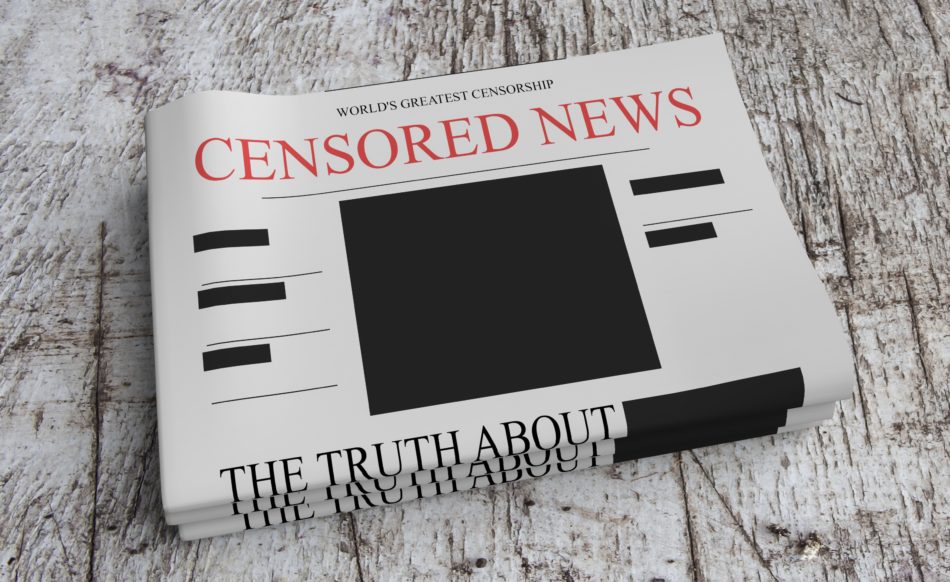In the past, only the communist and socialist countries were pinpointed to be the countries behind the “Iron Curtain.” But after the recent conflicts between the two blocs, it is now evident that even the United States, the leader of the so-called Free World, has gone under one kind of Iron Curtain.
Though the term was occasionally used as a metaphor since the nineteenth century with varied meanings, it got the present “stigma” by former British Prime Minister Winston Churchill. On March 5, 1946, he delivered a lecture in Missouri, USA in which he slammed the “communist states” and said, “From Stettin in the Baltic to Trieste in the Adriatic, an Iron Curtain has descended across the Continent.” Obviously, he meant the Soviet-bloc countries.
The term was widely used during the previous Cold War era that lasted till the late 80s of the last century. It was used by Western propagandists to depict a picture that the people under Soviet-led “communist” countries were living behind a water-tight Iron Curtain. They were not only denied democracy but also access to alternative thoughts and ideas of the “Free World.” Certainly, this allegation was not unfounded, though it was overwhelmingly one-sided. Western political thoughts could not reach the ordinary people living inside the “Iron Curtain.” On the other hand, Western media greatly distorted the picture of the Iron Curtained countries and their leaders’ viewpoints. McCarthyism even tried to prohibit socialistic ideas and activities.
Unfortunately, a new version of the Cold War is on the horizon primarily due to the expansion of NATO and the subsequent outbreak of the Ukraine War. The US-China conflict may worsen the situation further which might be more dangerous for the world.
Definitely, there are substances in Western accusations that people living in Russia and the People’s Republic of China (PRC) remain confined in the dark when their governments do not want to shed panoramic light on conflicts and ideas. It is up to the rulers what and how much to be shown – full, partial, or anything at all. It is completely controlled by them. They do it bluntly without any excuse. In times of conflict, people have no access to Western and critical media. The Kremlin or Zhongnanhai, the President’s office of the PRC even does not deny such blackouts. They cannot.
The picture of the other side, i.e., the US-led West and their associates is not so bright, either. It is grey. But if distortions are taken into consideration, it leads people to false and misleading conclusions. This is more dangerous. Hiding information is bad. Russia is ruthless in blocking unwanted information. But distortion or partial depiction might turn out to be worse. The world knows that the West has imposed different sanctions on Russia. Particularly, the embargo on Russian oil exports is intended to cripple its economy and thereby its ability to continue the war. But the Western media is not enthusiastic to highlight how sanctions against Russian gas and oil export paved the way for US CNG and LNG export to Europe.
The Ukraine War made possible what was unthinkable only 1 year ago. Western media enthusiastically reported the explosion on the North Stream 11 pipeline. But they are reluctant to make any serious investigative reporting on it. The fallout might not go in favor of the West. Examples are many.
In the so-called socialist countries, the blackout of the Western media is complete. Now, it seems the West is following suit, though not so bluntly. Since the beginning of the Ukraine War, they have almost shut down official Russian media. People are being denied access to channels like RT.
On the other hand, most of the big and influential Western media appears to have become extensions of the White House, Downing Street, Elise Palace, etc. War correspondents from different news channels like CNN and BBC report and telecast the events as if they are correspondents of the Pentagon or defense ministries of the UK, France, and other allied countries. It becomes evident from their subjective descriptions and even from the tones of their verbal expressions and utterances. People get a biased, distorted, and at best, a partial picture. However, the door to unbiased, serious, and objective reporting is not totally closed in the West.
A good number of political commentators, analysts, scholars, experts on military and war affairs, and pundits on economic and financial subjects are trying their best to portray the real picture objectively and from a wider perspective. Who questions the integrity and depth of knowledge of Noam Chomsky, Professor Wolff, John Pilger (Australian), John Mearsheimer, Scott Ritter, Jeoffrey Sachs, Col. Douglas Macgregor, Ray McGovern, and the likes? But they are not properly covered by CNN, Bloomberg, ABC, BBC, Washington Post, New York Times, and other big channels and newspapers. Only YouTube and some other social media try to spread their viewpoints with limited resources.
It is nothing in comparison to distorted information carried out by the mainstream media and so-called think tanks owned by influential lobbies. The Iron Curtain in the East is not covered, anybody can see it. But in the West, the Iron Curtain has a veil in front of it. How smart they are!
*Anisur Rahman is a senior Bangladeshi journalist residing in Sweden.
May 28, 2023
The viewpoints expressed by the authors do not necessarily reflect the opinions, viewpoints and editorial policies of Aequitas Review.

